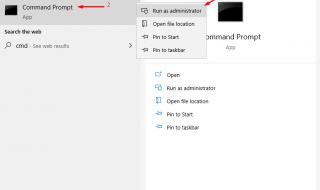In the complex landscape of data management, the ability to manage revisions in database systems is crucial. This involves overseeing changes to database structures, data entries, and schema to ensure the system remains efficient, accurate, and functional. Effective revision management is key to maintaining data integrity and reliability, especially in environments where data is constantly changing. This article provides insights into the best practices and strategies for managing revisions in database systems.
Contents
The Importance of Revision Management in Databases
Database revisions can include anything from minor data updates to significant structural changes. Without proper management, these revisions can lead to data inconsistencies, system downtime, and even security vulnerabilities. In an age where data is a critical asset for most businesses, efficient revision management isn’t just a technical necessity but a business imperative.
Strategies for Effective Revision Management
- Version Control Systems: Using database version control tools is one of the most effective strategies for managing database revisions. These track changes, allow for version comparison, and facilitate rollback in case of errors, ensuring that revisions are well documented and manageable.
- Automated Testing: Before applying changes to the live database, it’s crucial to perform automated testing. This helps to identify potential issues early on, ensuring that revisions don’t negatively impact the database’s functionality or integrity.
- Change Evaluation: Each proposed revision should undergo a thorough evaluation process. This involves assessing the necessity of the change, its potential impact, and planning how to implement it with minimal disruption.
- Data Backup and Recovery Plans: Regular backups are essential in revision management. They ensure that, in the case of a problematic revision, data can be restored to its previous state, thus maintaining data integrity.
- Monitoring and Auditing: Continuous monitoring and auditing of the database system allow for the early detection of issues related to revisions. This proactive approach helps to maintain the health and performance of the database.

Best Practices in Managing Database Revisions
- Documenting Changes: Keeping detailed records of all revisions, including what was changed, why, and by whom, is essential. This documentation is invaluable for troubleshooting and future reference.
- Staging Environment Testing: Testing revisions in a staging environment that mirrors the production database is crucial. This allows for safe testing and adjustment of revisions before they go live.
- User Training and Communication: Ensuring that all team members are trained in revision management best practices and keeping them informed about changes is key to prevent errors and miscommunications.
- Incremental Implementation: Implementing changes incrementally, rather than all at once, can reduce the risk of significant disruptions and make it easier to track the impact of each revision.
- Compliance with Standards: Adhering to industry standards and regulatory requirements, especially in handling data revisions, is crucial for legal compliance and maintaining customer trust.
Conclusion
Managing revisions in database systems is a critical aspect of data management that requires careful planning, thorough testing, and diligent monitoring. By adopting effective strategies such as version control and automated testing, and adhering to best practices like detailed documentation and incremental implementation, organizations can ensure that their databases remain accurate, efficient, and secure. In an increasingly data-driven world, the ability to manage database revisions effectively is indispensable for maintaining the integrity and reliability of one of the most valuable assets—data.



